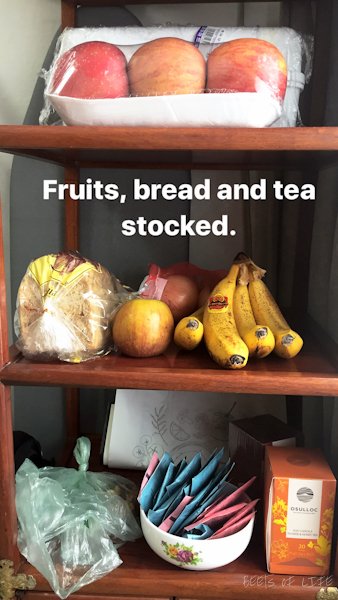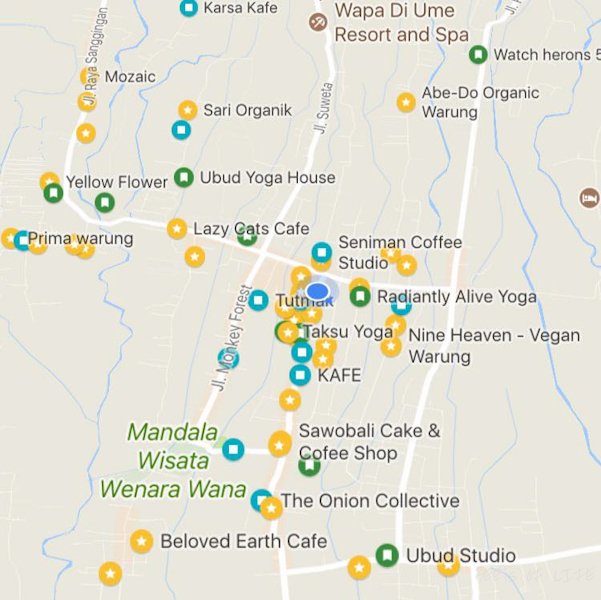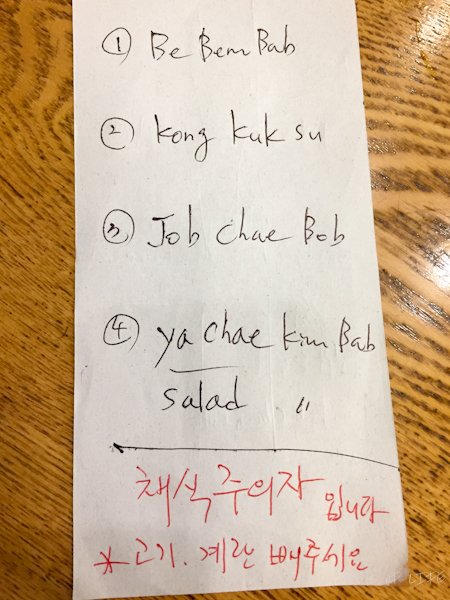How to Survive as a Vegetarian Traveler
There are so many beautiful countries to see in this world, and you want to visit them all. However, in some countries, people might look at you funny, when you say, “I’m vegetarian!”. For us, India and Ubud were a breeze; we had access to an array of delicious, healthy and reasonably priced vegetarian food. However, in countries like Japan, South Korea, and Mauritius it wasn’t quite so. Although we found some good options, finding healthy options quickly became a problem. Based on our experiences, here are tips and strategies for surviving as a vegetarian traveler in a country where vegetarian food is not ubiquitous.
(Although this article is written from a vegetarian perspective, it is applicable to anyone with specific dietary considerations.)
Bring food from home or cook if you have a kitchen
Ideally, when packing it would be wise to check-in a bag stocked with food. Works really great for those shorter trips! On our trip to Hawaii, we checked in a bag with non-perishable items and it worked out really well for breakfasts and light snacks. We had access to food exactly the way we wanted: vegetarian and healthy! It saved us a ton of money, helped us get out the door faster (yay for more time towards exploring), and kept us from consuming unnecessary calories that don’t feed the soul or help the waistline.
Cooking on the road is always fun. You appreciate your homemade meals a thousand times more! Long-term travelers, who may not be able to pack an extra bag or carry food, can plan ahead and book places with a kitchen so you can cook “at home”. We always carry some basic spices in order to prepare simple homemade meals. For accommodation with kitchens, Airbnb, Booking or Agoda have always come to the rescue especially when traveling in countries like Mauritius and S. Korea.
Our fridge in S. Korea stocked with veggies galore! Other essentials for vegetarians Another tip is to learn the local cuisine and substitute the meat. (Although getting local packaged ingredients are easier, it may be hard to find out which ones are purely vegetarian if they are printed in a different language). This could require more research, but can also work to be a great immersive experience.
Plan before heading out for the day
Since it’s not always easy to find vegetarian food on the go, without some planning beforehand, you could find yourself tirelessly walking around a neighborhood. Being hungry can make one irritable and cranky. Couple that with trying to find vegetarian food during a hot and tiring day of sightseeing, and you might find yourself screaming at innocent bystanders. We don’t want that to happen!
If you know what you are going to be doing during the day, it helps to plan where you are going to be eating before heading out. Apps such as Happy Cow, Google Maps, and Trip Advisor are very useful for this. Also, some of the more uncommon methods are to search for local Facebook groups for vegetarians (we found this one for restaurants in Seoul), or ask your host/concierge if they have any recommendations. (This last tip can be hit-or-miss since they are usually locals, who only eat meat, or may themselves have a vague understanding of what vegetarian food entails).
If you travel in the way we do, you may not be the “let’s research exactly what we are doing today” type of travelers and instead prefer to see where the day takes you. For this, a trick we like to use is to “star” the places we have researched when planning a trip, on Google Maps. That way we always know where the closest vegetarian restaurant is no matter which part of town we end up in. This technique works best if you have network connectivity on the go.
Happy yellow dots on Google Maps showing us where we can find vegetarian food. Ubud, Bali is heaven for vegetarians! Seek out International Cuisines
Food is a great part of the local experience. Although we actively seek out local cuisine when we visit a country, as vegetarians there aren’t always options. In predominantly meat-eating countries, we have often had to opt for international cuisines or global fast food chains. Indian, Italian and Thai food usually have vegetarian and vegan options. (Make sure to say no to fish sauce if going with Thai food). The only drawback is that international cuisines can be more expensive than local food but that’s a small price to pay for your sanity.
The time we had to settle for a Subway sandwich Communicate with locals
Learn how to say certain key vegetarian phrases in the local language. Searching for “vegetarian guide <insert country here>” on your favorite search engine should lead you to a host of articles that describe how to ask for vegetarian food in that particular country. Also, asking your host to write down the phrases in the local language is very helpful. We simply hold up the writing to our server to make doubly sure that what we are getting is vegetarian. This technique has proved to be quite effective! However, you might still be “meat surprised”, so watch out before you take that first bite.
Our handy list of “ya chae” vegetarian dishes to ask for in Korea! What is “meat surprised” you ask? In Jeju, S. Korea, desperately in need for vegetarian food, we asked our host if he knew any vegetarian places close by. To our pleasant surprise, he actually replied in the affirmative. With the exact dishes to order, and some key phrases such as “No meat”, “No fish”, and “Only vegetables” written out in Korean, we excitedly hurried to one such place. We showed our server the handwritten note and ordered the recommended ya chae Kimbap (a dish similar to sushi). We were pretty excited at the prospect of having vegetarian sushi since we weren’t able to find it in Japan. When the dish arrived, we found that it had bits of ham in it! That is getting “Meat Surprised!” And surprised we were.
Enter point #5!
Be Flexible
As in Jeju, sometimes, despite making sure that the chef or wait staff understand that we are vegetarian and don’t eat fish, meat or anything with animal products, we still ended up being served a meal with meat in it. Things do get lost in translation and travel has taught us to be flexible! This may or may not be okay for you but it’s something to seriously consider if you want to travel to places that don’t understand or support your choices. We have had to switch to eating eggs and I’m pretty sure we’ve unknowingly eaten meals cooked in lard or chicken/beef stock.
When traveling through Miyajima, Japan, we wanted to try Okonomiyaki, which is famous in that region, and typically a non-vegetarian dish. I remember asking one particular restaurant if they could adapt the dish to make it vegetarian and they replied in the affirmative. I was not convinced, and I pursued the “we are vegetarian” explanation as it didn’t feel like they understood. It wasn’t until the chef showed us a bottle of vegetarian sauce did we feel satisfied that we were going to get what we were looking for. It didn’t help that they cooked it on the same grill where they had just finished grilling oysters and other seafood. But that’s where point #6 comes in.
Vegetarian sauce, ooooh yea! Practice acceptance
Understand that some of your food may have some unwanted ingredients. As for that Kimbap in Jeju, we took out the ham pieces and ate the dish while savoring each bite. For the Okonomiyaki in Japan, we chose to look the other way, and enjoy our beer. It is best to practice acceptance that some of the ingredients might not be vegetarian or might be cooked along with non-vegetarian food. The alternative, unfortunately, might be to go hungry and possibly ruin the entire trip. Our method is to do the “smell test” and if it doesn’t smell funky, or we don’t have a gag response, then we go for it. We’d rather be grateful and eat our food with a positive mindset than be negative and disillusioned.
Yeah, being a vegetarian can be challenging. We have found that it also adds to our experience. It’s not something we want to easily compromise on, and it helps us get out of our comfort zone to try and find food in typically non-vegetarian countries. It also forces us to interact with locals in an untraditional way, which helps make for a better travel experience and spread the word about vegetarianism!
What are some of your tricks and tips? How is it different for people with other dietary considerations? Comment below.









